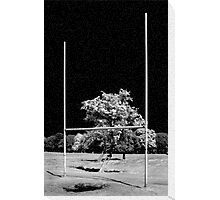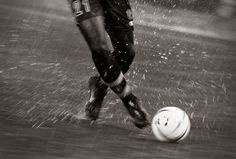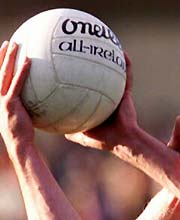You are using an out of date browser. It may not display this or other websites correctly.
You should upgrade or use an alternative browser.
You should upgrade or use an alternative browser.
Glen
Moderator
Interesting that the curved bat is the design that ends up the most popular, shades of jai alai much?.
Oddly enough, completely separate. When I was researching the development of baseball and their equipment, specifically the baseball bat, it seemed the only real problem with this innovative bat design was it showed up too late as the rounded bat (itself a product of the quest for optimization) had already become standardized. Gives DSAverse baseball a distinctive flavor.
So that's two sports for the Stars 'n Stripes, I wonder if we'll get any more before other ones from elsewhere get covered?
Oh, we'll see....
Glen
Moderator

Gaelic influences on US sports are manifold, both from the initial influx of Scots-Irish Presbyterians before the Revolution in the 1730s, as well as Irish Catholics after the revolution. The steady influx of Irish probably had a major impact on the development of ice hurley (indeed, the very name, hurley, is believed to have Celtic origins). Given it's position of the most northern nation in North America, it is not surprising that this team ice sport developed. By the mid 19th Century, its rules had been standardized and it was played throughout the USA. Unlike many other team sports, ice hurley had only nine players per team; one goalkeeper, four backs, and four forwards. While forward passing was allowed early, backs had to stay in their half of the ice field, and forwards had to stay on the opponent's side of the ice field.
It is not very surprising that the nations of Northern Europe also developed the game. Russia claimed to have developed antecedents to ice hurley, with a prominant rumor being that it was a game originating with the Vikings, who spread it throughout Europe, including the lands of Russia and Ireland. Scandinavia became early enthusiasts of the sport. the Korsgaardist regimes in Russia and Prussia-Poland embraced the sport as a heritage sport, though they basically took the whole of the modern American rules, just changing the names of ice hurley and its terms to match local history and language. However, after the collapse of the East after the Global War, only Russia used its own terms for the game, and even those evaporated after the start of international play in the first half of the twentieth century.
A large indoor ice arena, the largest ever to date, was built in Athens explicitly for ice sports for the 1930 inaugural Olympics, on which the biggest draw by far was the ice hurley competitions. The US and Russian teams made it to the championship game, which came down to sudden death, with the winning puck shot coming from legendary Franco-American ice hurley forward, Jacques Hebrard, whose statue can still be seen in front of Montreal's city hall.
Last edited:
Glen
Moderator
In many ways, handball and football are two sides of the same coin, a coin minted in Great Britain.
While descriptions of games involving a large inflated ball being kicked or carried through a goal had been known for centuries, it was the 19th century that saw both the divergence and codification of the 'hand' and the 'foot' versions of the game. Born out of the rules of the Public Schools, at first the various versions involved different shaped balls, different amounts of use of catches and kicks, different numbers of playeers, different scoring methods, different shaped goals and just about any other variable of the game you care to imagine. However, with the development of passenger rail in the first half of the 19th century, interschool games became more and more common, and the movement was afoot to develop unified rules of the game to make these interschool games easier to conduct and follow for the spectators. While several things were mutually designated by the mid 19th century, such as the number of players per team (fifteen), starting the game with a scrimmage circle, the forward pass, continuous play except for injuries and the half, and the H shaped goalpost, a rift developed between supporters of kicking versus passing games, embodied by two men, George Illingworth and John Jolly.

George Illingworth of Yorkshire was the main proponent of the passing game, and his disdain for kicking grew as he engaged in a decades long public fight with John Jolly of Norfolk, the champion of the kicking game. The two engaged in constant letter writing to the press, extolling their preferred means of moving the ball, while also establishing and recruiting for the two great national game associations, Illingworth's British Association of Handballers (BAH), and Jolly's Football Association of Britain (FAB). Many public schools were divided over the camps, but with the Jolly's footballers slowly taking the majority of the schools under their aegis. On the University play level, both games often were played, and often there was fierce intracollegial rivalries between the handball and football fanatics who tried to prove the superiority of their sport.
The BAH developed the rules of handball, standardizing the shape of the ball as a prolate spheroid, felt to be more conductive to throwing and carrying, maintained the full tackle in order to shake loose the ball (except for the goalkeeper who was sacrosanct), and established that a player holding the ball in the behind (or end-field as it is sometimes called) scores one point, throwing the ball through the goalposts above the crossbar of the H goalpost scores two points, and getting the ball past the goalkeeper through the goalposts below the crossbar either by throwing or carrying scores four points.

The FAB of course codified football, but used a spherical ball designed for kicking and passing by foot, forbade use of the hands (except by the goalkeeper), forbade any throwing, outlawed the tackle, and maintained that scoring was only by kicking the ball above the crossbar between the H goalposts for one point, or kicking it past the goalkeeper below the crossbar between the goalposts for two points.

While Illingworth's handball game was less successful in recruiting Public Schools to his style of play, he did have one huge success, and that was convincing the British Army that his handball rules taught and improved tactical thinking among its players compared to football. The British soldiers would often play the handball game during their off times, and this led to the game spreading more rapidly than football to the colonies of the British Empire, especially the Dominion of Southern America in the aftermath of the Slaver Uprising. Many Empire Loyalists who had shed blood next to the British regulars played the game with their comrades in arms, and the Southrons can be said to have taken to the game like fish to water. Even the former Rebels eventually embraced the game as a true manly pursuit. By the early twentieth century, the game had even spread to their neighbor to the north, the USA, one of the few non-Imperial nations to take to handball.
Jolly's football had its own successes beyond the Public Schools of Great Britain, as it was embraced by many of the young men of quality in Europe. It spread early and rapidly among the European upper classes, and was difficult to suppress during the Korsgaardist era in Eastern Europe, where it was felt to be too British. However, after the Global War football saw a resurgence in Eastern Europe, and by the twentieth century it was the most common game played throughout the continent.
One major exception to the handball/football divide was Ireland, which held to its own form of ball, called caid (after an older version of a ball game native to Ireland, though much different in rules and form). Caid adopted all the common features of British handball and football, used the tackle and scoring of handball, but kept the ability to kick the ball, and in fact required that after 15 steps the ball had to be thrown or kicked. The ball (spherical as in football) could be caught or run into the behind (end-field) for a point, and either kicked or thrown through the upper part of the goal for two points, and the lower part guarded by the goalkeeper for four points.

Both handball and football were Olympic sports at the 1930 Olympic games, though caid did not have enough international support to be included. The Dominion of Southern America, fielding its own team, took the championship for handball, but England, birthplace of the sport, won for football.
While descriptions of games involving a large inflated ball being kicked or carried through a goal had been known for centuries, it was the 19th century that saw both the divergence and codification of the 'hand' and the 'foot' versions of the game. Born out of the rules of the Public Schools, at first the various versions involved different shaped balls, different amounts of use of catches and kicks, different numbers of playeers, different scoring methods, different shaped goals and just about any other variable of the game you care to imagine. However, with the development of passenger rail in the first half of the 19th century, interschool games became more and more common, and the movement was afoot to develop unified rules of the game to make these interschool games easier to conduct and follow for the spectators. While several things were mutually designated by the mid 19th century, such as the number of players per team (fifteen), starting the game with a scrimmage circle, the forward pass, continuous play except for injuries and the half, and the H shaped goalpost, a rift developed between supporters of kicking versus passing games, embodied by two men, George Illingworth and John Jolly.

George Illingworth of Yorkshire was the main proponent of the passing game, and his disdain for kicking grew as he engaged in a decades long public fight with John Jolly of Norfolk, the champion of the kicking game. The two engaged in constant letter writing to the press, extolling their preferred means of moving the ball, while also establishing and recruiting for the two great national game associations, Illingworth's British Association of Handballers (BAH), and Jolly's Football Association of Britain (FAB). Many public schools were divided over the camps, but with the Jolly's footballers slowly taking the majority of the schools under their aegis. On the University play level, both games often were played, and often there was fierce intracollegial rivalries between the handball and football fanatics who tried to prove the superiority of their sport.
The BAH developed the rules of handball, standardizing the shape of the ball as a prolate spheroid, felt to be more conductive to throwing and carrying, maintained the full tackle in order to shake loose the ball (except for the goalkeeper who was sacrosanct), and established that a player holding the ball in the behind (or end-field as it is sometimes called) scores one point, throwing the ball through the goalposts above the crossbar of the H goalpost scores two points, and getting the ball past the goalkeeper through the goalposts below the crossbar either by throwing or carrying scores four points.

The FAB of course codified football, but used a spherical ball designed for kicking and passing by foot, forbade use of the hands (except by the goalkeeper), forbade any throwing, outlawed the tackle, and maintained that scoring was only by kicking the ball above the crossbar between the H goalposts for one point, or kicking it past the goalkeeper below the crossbar between the goalposts for two points.

While Illingworth's handball game was less successful in recruiting Public Schools to his style of play, he did have one huge success, and that was convincing the British Army that his handball rules taught and improved tactical thinking among its players compared to football. The British soldiers would often play the handball game during their off times, and this led to the game spreading more rapidly than football to the colonies of the British Empire, especially the Dominion of Southern America in the aftermath of the Slaver Uprising. Many Empire Loyalists who had shed blood next to the British regulars played the game with their comrades in arms, and the Southrons can be said to have taken to the game like fish to water. Even the former Rebels eventually embraced the game as a true manly pursuit. By the early twentieth century, the game had even spread to their neighbor to the north, the USA, one of the few non-Imperial nations to take to handball.
Jolly's football had its own successes beyond the Public Schools of Great Britain, as it was embraced by many of the young men of quality in Europe. It spread early and rapidly among the European upper classes, and was difficult to suppress during the Korsgaardist era in Eastern Europe, where it was felt to be too British. However, after the Global War football saw a resurgence in Eastern Europe, and by the twentieth century it was the most common game played throughout the continent.
One major exception to the handball/football divide was Ireland, which held to its own form of ball, called caid (after an older version of a ball game native to Ireland, though much different in rules and form). Caid adopted all the common features of British handball and football, used the tackle and scoring of handball, but kept the ability to kick the ball, and in fact required that after 15 steps the ball had to be thrown or kicked. The ball (spherical as in football) could be caught or run into the behind (end-field) for a point, and either kicked or thrown through the upper part of the goal for two points, and the lower part guarded by the goalkeeper for four points.

Both handball and football were Olympic sports at the 1930 Olympic games, though caid did not have enough international support to be included. The Dominion of Southern America, fielding its own team, took the championship for handball, but England, birthplace of the sport, won for football.
Glen
Moderator
Given the early date of the point of divergence, team sports were bound to be different. They were codified in the 19th century and slowly evolved thereafter, so we would expect the ones codified in this timeline to be somewhat different. I'd be very interested to hear the opinions of our sports enthusiasts on these new team offerings in the DSAverse .
Glen
Moderator
Prior to the 20th century, the closest that the world came to decimalization was during the French Revolution. However, those efforts (and similar ones by Jefferson and French Emigres to Quebec) came to naught in the end. It was not until the late 19th century and early 20th century that interest began again, particularly in the science community, to develop universal standards of measurement based on true universals, especially as physics advanced and more became known about the physical constants of the universe. Based on work on black body radiating and the speed of light in a void, standards were normalized to make the mathematics of science more streamlined, and decimalization then was used to scale these measures for more human use. The units for electrical charge were easily accepted as they were not in common use otherwise, and while there was significant resistance, length, mass, and temperature also made inroads even into regular life, but time was the most problematic desire most had to retain the relation of time to the length of the day (though even the length of a 'day' was variable over the year). Given the lead the Royal Society took in promulgating scientific measures, many of them co-opted old English terms for measures. The science charge (sc) was as mentioned readily accepted into the population, and the science mile (sm) became the standard for measuring distances (given how close it worked to previous definitions of mile this was an easier transition with 1 science 'mile' = 1.004 old English miles). The science pound (sp) massed about 48% of the old English pound and was also able to find widespread use. The science degree (sd) for temperature also became standard for scientific works and often was found marked along with the more traditional Fahrenheit or Celsius measures of temperature. The science second (ss) equalling approximately 0.54 old English second, would mostly be confined to scientific equations and work as the best decimalized fit to the Earth day would have required a new 16 'science hour' day, and this did not work out with the world's population, though 'scientific clocks' do sell as novelty items.


So if I understand things correctly, the whole world treats the *metric system like the US does OTL, using it in scientific and technical contexts but keeping older measurements for everyday life. Interesting.
What is Virginia like? I've lived there, and imagining a Virginia that's culturally separate from the rest of the South feels...weird.
Also, what's the position of non-English languages in the Caribbean? According to wiki-land, Puerto Rico had massive immigration in the 19th century, raising its population tenfold, so I can see TTL's "Richport" coming into being, although I expect there'd be a Spanish-speaking minority. I have a harder time seeing Cuba becoming Anglicized, though-I think its going to be the DSA's "Quebec", with a similar proportion of English-speakers.
As to Hispanola, did Dessalines' OTL genocide of the Haitian white population still happen? How much of the Hispaniolan upper class comes from French/Spanish times vs. post-conquest British settlers? What about the population as a whole? Depending on the mix, I can see a lot of tension-maybe even violent tension-between Francophones, Hispanophones, and Anglophones. Perhaps that was a factor in the failure of Hispaniola's dominion government?
What is Virginia like? I've lived there, and imagining a Virginia that's culturally separate from the rest of the South feels...weird.
Also, what's the position of non-English languages in the Caribbean? According to wiki-land, Puerto Rico had massive immigration in the 19th century, raising its population tenfold, so I can see TTL's "Richport" coming into being, although I expect there'd be a Spanish-speaking minority. I have a harder time seeing Cuba becoming Anglicized, though-I think its going to be the DSA's "Quebec", with a similar proportion of English-speakers.
As to Hispanola, did Dessalines' OTL genocide of the Haitian white population still happen? How much of the Hispaniolan upper class comes from French/Spanish times vs. post-conquest British settlers? What about the population as a whole? Depending on the mix, I can see a lot of tension-maybe even violent tension-between Francophones, Hispanophones, and Anglophones. Perhaps that was a factor in the failure of Hispaniola's dominion government?
Glen
Moderator
So if I understand things correctly, the whole world treats the *metric system like the US does OTL, using it in scientific and technical contexts but keeping older measurements for everyday life. Interesting.
Not quite, at least not in 1930 which is about where we are at in the timeline. It is somewhere between the two. In a way this makes sense because the scientific measures are actually more ambitious than anything that has been tried IOTL. Electrical devices are all using scientific measurement units by 1930. Miles have been converted to scientific miles universally and are used throughout the world, but smaller measures like inches, feet, and yards are mixed in whether the old English system (or other pre-decimalized measures) are being used, or decimalized subunits of the scientific mile (like the micromile). The rest are being used sort of side by side (products or measuring devices being marked in the two systems). The scientific and medical community are only using scientific measures at this point in history. Products with an international market also are using scientific measurement even numbers mostly for packaging and standardization, though those that are purely local are pretty much just using the old style measurement equivalent. As mentioned in the write-up, time is the one that has really not taken off outside of scientific projects. Now, how things proceed in the future remains to be seen...
What is Virginia like? I've lived there, and imagining a Virginia that's culturally separate from the rest of the South feels...weird.
Virginia is mostly agricultural and maritime. They are more and more like the rest of the USA, though they are the most 'Southern' of the USA states. However, think of it more like Maryland and Delaware than is OTL Virginia.
Also, what's the position of non-English languages in the Caribbean? According to wiki-land, Puerto Rico had massive immigration in the 19th century, raising its population tenfold, so I can see TTL's "Richport" coming into being, although I expect there'd be a Spanish-speaking minority.
By the twentieth century, English is the dominant language in Richport (OTL Puerto Rico), so much so that any born Richport inhabitants would speak Spanish only as a second language. Some of the Cubans retained bilingualism in their family, and among the lowest classes in Cuba there is still a creole mix of Spanish and English. Similar story to Cuba in the OTL Haitian part for French and OTL Dominican part for Spanish of Hispaniola.
I have a harder time seeing Cuba becoming Anglicized, though-I think its going to be the DSA's "Quebec", with a similar proportion of English-speakers.
Like Quebec, yes, but not as strongly so. The French-Canadians were given a lot more considerations than the Cuban-Southrons.
As to Hispanola, did Dessalines' OTL genocide of the Haitian white population still happen?
No. There were atrocities, but nothing so successful as Dessalines' OTL one.
How much of the Hispaniolan upper class comes from French/Spanish times vs. post-conquest British settlers? What about the population as a whole? Depending on the mix, I can see a lot of tension-maybe even violent tension-between Francophones, Hispanophones, and Anglophones. Perhaps that was a factor in the failure of Hispaniola's dominion government?
It's a real mix, and there is a lot of tension in Hispaniola's society, but no large scale violence. The tensions were a factor in the failure of the Hispaniola Dominion.
Around this time in the 1920s to the 30s, there was an American golden age, and over in France, American emigres were living in Paris. Over in Germany, various revolutions / depressions struck the German economy but ittl, most of this doesn't occur.
But, would we be seeing something compared to the Great Depression around the world? the Dust Bowl in the 1930s? and ittl, what is going on in Russia and the Ukraine around this time?
But, would we be seeing something compared to the Great Depression around the world? the Dust Bowl in the 1930s? and ittl, what is going on in Russia and the Ukraine around this time?
Glen
Moderator
Around this time in the 1920s to the 30s, there was an American golden age, and over in France, American emigres were living in Paris. Over in Germany, various revolutions / depressions struck the German economy but ittl, most of this doesn't occur.
Most doesn't occur, correct.
But, would we be seeing something compared to the Great Depression around the world? the Dust Bowl in the 1930s?
No.
and ittl, what is going on in Russia and the Ukraine around this time?
Russia is just emerging from decades long isolation (the Ukraine is very much still part of the Russian Empire at this time).
I hope people don't think this is an update... 
Sorry I missed the last few Glen, I've not been too well for the last couple of months, and hadn't been on the site.
The sports stuff looks really interesting. I'm glad the Olympics exist, and that Athens managed to host the first one. It'd be nice if the next one was in Russia, to reward the man with the vision to revive the thing.
I really like the fact that Ice Hurling, Baseball and Lacrosse all come to be. They're obviously all OTL games, or incredibly similar, but they're all different enough to be interesting. I especially like the idea of a scoring post for Lax.
As for the "football" entry: you've managed to take handball, association football, rugby and Gaelic football, and produce two new, very interesting games. I suspect I'll have to side with my Uncle's relations over my own immediate ancestors, as I think my limited sporting abilities are more suited to BAH than they are to FAB. Sorry if I missed this, but are both games 15-a-side?
The scientific measures is very ambitious. Metric/scientific time? I suspect many of the other measures will spread slowly, leaving much of the world with the sort of hodgepodge that OTL's UK has between Imperial and Metric units. If sixteen hour days do take root, I suspect they'll be a long time coming - however that period is measured.
PS, I've voted!
Sorry I missed the last few Glen, I've not been too well for the last couple of months, and hadn't been on the site.
The sports stuff looks really interesting. I'm glad the Olympics exist, and that Athens managed to host the first one. It'd be nice if the next one was in Russia, to reward the man with the vision to revive the thing.
I really like the fact that Ice Hurling, Baseball and Lacrosse all come to be. They're obviously all OTL games, or incredibly similar, but they're all different enough to be interesting. I especially like the idea of a scoring post for Lax.
As for the "football" entry: you've managed to take handball, association football, rugby and Gaelic football, and produce two new, very interesting games. I suspect I'll have to side with my Uncle's relations over my own immediate ancestors, as I think my limited sporting abilities are more suited to BAH than they are to FAB. Sorry if I missed this, but are both games 15-a-side?
The scientific measures is very ambitious. Metric/scientific time? I suspect many of the other measures will spread slowly, leaving much of the world with the sort of hodgepodge that OTL's UK has between Imperial and Metric units. If sixteen hour days do take root, I suspect they'll be a long time coming - however that period is measured.
PS, I've voted!
Share: